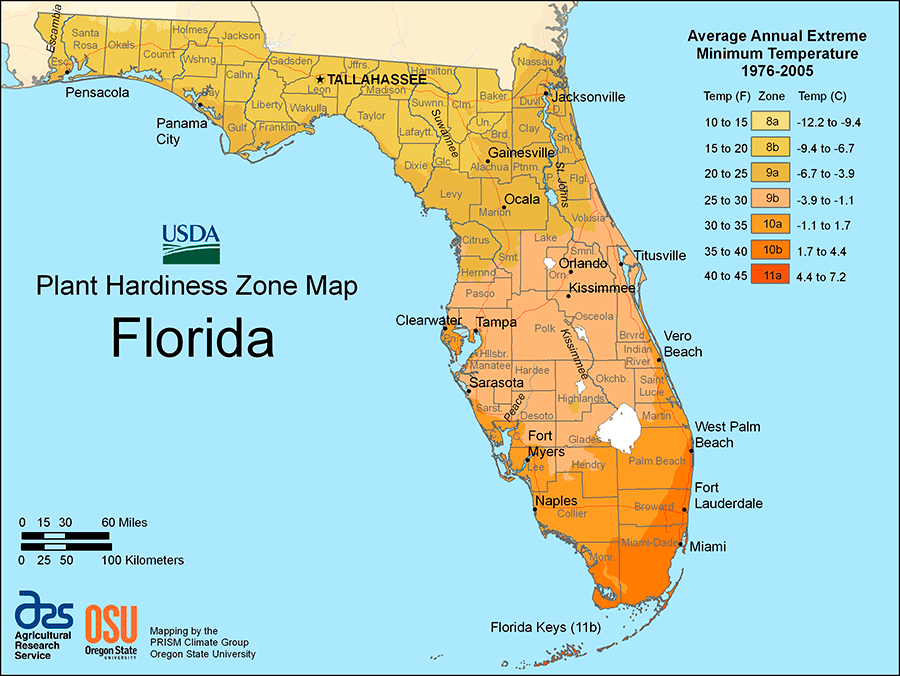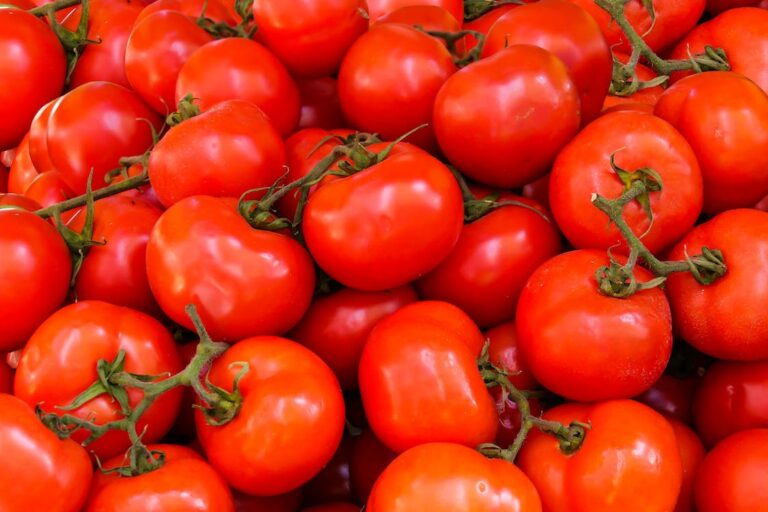Tomatoes, heralded as both a fruit and vegetable, have garnered immense popularity in Florida gardens. This versatile plant not only graces the salads and dishes of Floridians but also adds a vibrant splash of color to their gardens. Their rich nutritional content, including a robust blend of antioxidants, vitamins A, C, and K, and essential minerals, makes them a staple in many diets. Coupled with their adaptability in a plethora of dishes ranging from sauces to sandwiches, and even juices, tomatoes have a unique and esteemed spot in Florida’s agricultural scene.
Tomatoes Planting and Care Guide for Florida
| Climate and Growing Zones | Tomatoes thrive in Florida’s warm and humid climate. They are suitable for USDA growing zones 8 through 10. |
|---|---|
| Nutritional Benefits | Tomatoes are rich in vitamins A and C, antioxidants, and lycopene, which may have potential health benefits. |
| Best Planting Time | The best time to plant tomatoes in Florida is in late winter or early spring, around February to March. |
| Soil Preparation | Prepare well-draining soil with a pH between 6.0 and 6.8. Incorporate organic matter and compost for optimal growth. |
| Location | Choose a sunny location with at least 8 hours of direct sunlight for your tomato plants. |
| Planting Process |
|
| Watering and Irrigation | Keep the soil consistently moist but not waterlogged. Water at the base of the plants to avoid foliage wetting. |
| Fertilization | Apply a balanced fertilizer before planting and again every 4-6 weeks during the growing season. |
| Pest and Disease Management | Monitor for pests like aphids and tomato hornworms. Use organic or chemical treatments as needed. Watch out for diseases like blight; ensure proper spacing and ventilation. |
| Harvesting | Harvest tomatoes when they are fully ripe but still firm. Average time to harvest varies by variety, usually 60-85 days from transplanting. |
| Common Varieties | Popular Florida tomato varieties include ‘Florida 91’, ‘Cherokee Purple’, ‘Roma’, and ‘Celebrity’. |
| Recipes and Culinary Tips | Enjoy tomatoes fresh in salads, sandwiches, and salsas. Create pasta sauces, roasted tomatoes, and tomato-based soups for delicious meals. |
How to Grow Tomatoes in Florida: Planting Guide and Tips
Climate and Growing Zones:
Florida’s diverse topography means its climate isn’t uniform. While it’s broadly classified as tropical to subtropical, Florida spans USDA Hardiness Zones 8b to 11a. Tomatoes, luckily, can adjust to this range, allowing for almost year-round cultivation. Northern regions, occasionally brushed with frost, may require protective measures during the colder months. In contrast, the sultry southern regions rarely face such issues. However, keen gardeners should pay heed to the state’s microclimates, especially when living near coastal regions, hilly terrains, or low-lying areas, which can influence temperature and humidity levels differently.

Best Planting Time:
Florida’s benevolent climate allows for multiple tomato planting seasons. Warm-season varieties are best sown between late winter to early spring (February to March), yielding a delectable summer harvest. On the other hand, cool-season tomatoes, which are slightly more resilient to cooler temperatures, are typically planted in the early fall (August to September), promising a bountiful winter harvest.
Preparing the Soil:
The sandy soils of Florida, while excellent for drainage, often lack the richness required for a tomato’s optimal growth. Before planting, it’s crucial to get your soil tested. This provides insights into the pH and nutrient composition. Tomatoes flourish in slightly acidic to neutral soil (pH 6.2 to 6.8). Augmenting the soil with compost, well-rotted manure, or other organic matter can significantly enhance its structure and nutrient profile. Additionally, mulching can help retain soil moisture and deter weeds. For areas with exceptionally sandy or heavy clay soil, raised beds or large containers filled with high-quality potting mix can be an effective alternative.
Choosing the Right Location:
For a plant like tomato, which thrives on sunlight, the planting location is paramount. Seek spots that bask in 6-8 hours of direct sunlight daily. While sunlight is non-negotiable, also ensure the chosen spot is somewhat protected from harsh afternoon winds. Furthermore, practicing crop rotation and not planting tomatoes in the same spot consecutively can help in reducing disease buildup.
Planting Process:
- Begin by marking spots approximately 2-3 feet apart.
- Each hole should be roughly twice the width of the tomato seedling’s root ball and of equal depth.
- If you’re transplanting, be gentle when extracting them from their initial pots to minimize root disruption.
- As you nestle the tomato plant into its hole, ensure the lower leaves are slightly above the soil surface, facilitating better growth.
- After placing the plant, fill the hole with soil, patting it down gently to remove air pockets.
- For urban gardeners or those with space constraints, tomatoes grow wonderfully in containers or raised beds. This allows better control over soil quality and drainage.
Watering and Irrigation: 
Water plays a pivotal role in a tomato’s lifecycle. In Florida, where the sun can be intense, it’s essential to maintain soil moisture consistency. Opt for deep and infrequent watering sessions over shallow, frequent ones, promoting deeper root growth. Drip irrigation systems or soaker hoses can be effective in providing consistent moisture while minimizing water wastage.
Fertilization:
Tomatoes have a voracious appetite for nutrients. A well-balanced, slow-release organic fertilizer, emphasizing phosphorus and potassium, can do wonders for your crop. While the initial application should be at planting time, subsequent feedings, typically every 4-6 weeks, can ensure sustained growth and a healthier harvest.
Pest and Disease Management:
Florida’s warm climate, unfortunately, is also a haven for pests and diseases. Tomato hornworms, aphids, and whiteflies are some common foes. Simultaneously, diseases like early blight and fusarium wilt can dampen the plant’s growth. Encouraging beneficial insects, like ladybugs or parasitic wasps, can provide a natural defense. As a preventative measure, ensure ample spacing between plants, keep the foliage dry, and opt for disease-resistant varieties.
Harvesting:
A tomato’s color, depending on its variety, and a slight softness upon being gently pressed are clear indicators of its readiness for harvest. It’s crucial to harvest tomatoes when they’re just right, ensuring they’re neither too hard nor overly ripe, to enjoy the best flavor and texture.
Recipes and Culinary Tips:
Tomatoes, with their tangy-sweet taste, can be the hero of many dishes. Consider making a classic Floridian tomato salad with avocados, a robust tomato sauce for pasta, or even a refreshing chilled tomato soup. The versatility of tomatoes ensures they can be roasted, grilled, juiced, or enjoyed raw.
Growing tomatoes in Florida is more than just a gardening venture; it’s an experience. From tending to the young seedlings to savoring the fresh produce, every step is a testament to nature’s bounty. With the right care, guidance, and a dash of love, Florida’s land can yield a tomato harvest that’s second to none.
